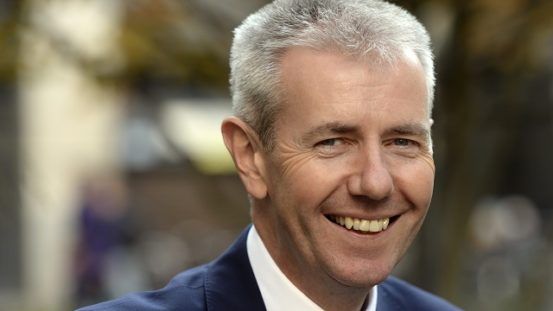A survey of fund buyers in the UK and across the rest of Europe that asked: ‘What is the future of ESG to you?’ revealed both sides are thinking along the same lines (see chart 1).

Whether a fund buyer is based in the UK or continental Europe, ESG matters to them.
They also believe that in future everyone will either use ESG criteria to select funds or they will keep two sets of model portfolios: one that is ESG and one that is not. Both groups think the issue is here to stay.
The data chimes with the experience of Simon Hynes, head of retail distribution for EMEA at Legal & General Investment Management (LGIM). “We are very much expecting ESG to become integrated in the investment process, for the funds people buy and their model portfolios as well,” he says.
“However, we are in a transition phase where people have got building blocks or entire portfolios that aren’t ESG in any meaningful way, but they want to get to that point.”
The key point is not about buying ESG funds but about expecting ESG to be integrated across all funds and portfolios. LGIM has a strong position in this.
“Though it doesn’t have a 100% ESG-friendly fund range, it does have a centralised corporate governance and active shareholder policy.
“At LGIM we are very strong on governance. We’ve been producing our annual report now for many years and each year we are getting more coverage and more and more interest,” says Hynes.
LGIM votes at annual general meetings and lobbies for better corporate governance, as well as social and environmental change in the companies it holds. This means that whether you invest in an ESG-friendly product or not, your LGIM money is being used to lobby for better corporate ESG in the underlying companies.
“People like the fact we are acting responsibly on the behalf of clients,” says Hynes.
“However, going further into full-fat ESG is a different game and that’s when the challenge of selling funds becomes real.”
On the wholesale side, while end investors are definitely interested in ESG and are asking more and more questions about it, for most it has not yet turned into strict ESG-only portfolios.
“Channel interest is still dominated by flows from institutional clients, and pension funds in particular,” says Hynes. “But things are changing, especially in countries where there is a regulatory driver, a fiduciary responsibility to consider ESG.
“For instance, we’ve seen the Mifid rules talking about forcing financial planners to make meaningful ethical considerations going forward.”
Though it will take time to change, Hynes believes change is inevitable. “It’s a juggernaut and it will only increase from here. I’ve no doubt about that.”
A hybrid stage
LGIM is making efforts to meet the slowly increasing demand for ESG products.
“We’ve launched a number of ESG-compliant building block funds and they’ve had more success than I would expect a fully-fledged solution to have.
“We’re also about to launch ESG versions of our multi-asset products. We already have a really successful range of multi-index funds run by the multi-asset team, so we are looking at ESG versions of those. It will be interesting to see how they do.”
The demand has also been diverse, says Hynes. “Wealth managers who run very traditional models normally wouldn’t come to a fund group for multi-asset products, as they do asset allocation themselves.
“But because they don’t have fully-fledged in-house ESG solutions yet, they want off-the-shelf products to meet clients’ ESG needs. We are in a hybrid stage.”
LGIM recently launched an ETF platform in Europe. It was bought from ETF Securities and comes with 20 products, none of which are specifically ESG.
“We are looking at that carefully,” says Hynes. “We bought the canvas range from ETF Securities. We need it to be a full-service range, so we are we are building out our ETF store, and part of that will be ESG.
“When we launched the ETF platform, we thought about how we would embrace the trend towards ESG and try and make even core equities exclude inherently bad companies. It’s not full-fat ESG but it is a start.”
LGIM has taken standard indices and added an extra layer of filtering. “We have excluded companies that everyone agrees are just bad, whether they are perennial offenders of the UN Global Compact or arms manufacturers.
With very minimal impact on your tracking error you can exclude them.”
Changing course
ESG is at an interesting stage of development. Almost every European fund buyer is making progress. Those at the beginning of the journey might still be interested in the more educational aspects, such as how ESG fits into the construction of a portfolio.
Those who are further along are looking for solutions that fit client demands.
Chart 2 shows what European fund buyers on average expect to buy more of. At the top of the list is ESG-themed funds, and we know that 1-1.5% of all assets are placed in these sorts of funds.
While they might increase in popularity, the total amount in assets will remain relatively low.
The really interesting development is revealed in the second and third bar – core equity and bond funds that are ESG compliant.
It is a market worth trillions of euros, and the one Hynes is preparing his company for.
The juggernaut is turning. When it finally changes course, we might be surprised by how quiet it is – and yet it looks like it will change the nature of the investment industry forever.

- This article first appeared on ESG Clarity‘s sister site, Expert Investor.








